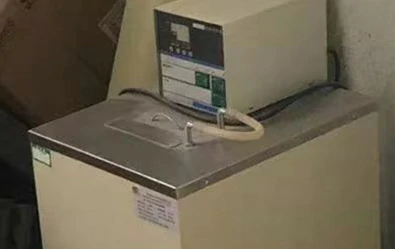loading...
- No. 9, Xingyuan South Street, Dongwaihuan Road, Zaoqiang County, Hengshui, Hebei, China
- admin@zjcomposites.com
- +86 15097380338
- Welcome to visit our website!
Durable and Stylish FRP Handrails for Safety and Aesthetic Appeal in Your Space
The Benefits and Features of FRP Handrails
When it comes to safety and structural integrity in various applications, FRP (Fiber Reinforced Polymer) handrails have emerged as a popular choice in different industries. These handrails, made from a composite material combining fiberglass and resin, offer numerous advantages compared to traditional materials such as wood or metal. This article explores the benefits and features of FRP handrails, highlighting their increasing popularity in construction and architectural projects.
Durability and Corrosion Resistance
One of the primary advantages of FRP handrails is their exceptional durability. Unlike wood, which may rot or deteriorate over time, or metal, which can rust and corrode when exposed to harsh environmental conditions, FRP handrails maintain their integrity for much longer. The fiberglass used in these handrails resists damage from moisture, chemicals, and UV rays, making them an ideal option for outdoor applications or areas exposed to corrosive substances, such as industrial facilities or waterfronts.
Lightweight and Easy to Install
FRP handrails are also remarkably lightweight, which simplifies the transportation and installation process. This can lead to reduced labor costs and shorter project timelines. The ease of handling FRP products means that they can be installed quickly without the need for heavy lifting equipment or excessive manpower. Despite being lightweight, FRP handrails do not compromise on strength; they can support significant loads and withstand heavy impacts.
Versatile Design and Customization
The aesthetic appeal of a structure is often just as important as its functionality, and FRP handrails do not disappoint in this regard. Available in a variety of colors, finishes, and designs, they can be customized to complement the architectural style of any establishment. Whether for a sleek modern building or a rustic environment, FRP handrails can be tailored to meet specific design requirements without sacrificing performance or safety.
frp handrails

Safety Features
Safety is a paramount concern in any construction project, and FRP handrails provide excellent performance in this area. They are designed to meet or exceed safety codes and standards, ensuring that they offer reliable protection in various settings. Their slip-resistant surfaces help reduce accidents, making them ideal for walkways, stairs, and elevated platforms. Additionally, the non-conductive properties of FRP make them a safe choice in electrical environments, where avoiding metal components is essential.
Environmental Sustainability
As the world becomes increasingly conscious of environmental concerns, the sustainability of building materials has gained significant attention. FRP handrails are often manufactured using environmentally friendly processes, and the materials themselves can be recycled at the end of their lifecycle. By opting for FRP handrails, companies and builders can contribute to reducing their carbon footprint while still maintaining the quality and safety of their structures.
Cost-Effectiveness
While the initial cost of FRP handrails may be comparable to traditional materials, their longevity and low maintenance requirements make them a more cost-effective choice in the long run. Property owners can save money on repairs and replacements over time, making FRP a smart investment. Additionally, the reduction in maintenance efforts frees up resources for other project needs, further enhancing overall profitability.
Conclusion
In summary, FRP handrails offer a wealth of benefits that make them an excellent choice for a wide range of applications. Their durability, lightweight nature, customizable design, safety features, environmental sustainability, and cost-effectiveness contribute to their growing popularity in the construction and architectural industries. As society continues to prioritize safety and sustainability, it is likely that FRP handrails will play an increasingly vital role in various projects, providing both functional and aesthetic benefits. With ongoing advancements in materials science, the future for FRP in handrails and other structural components looks promising, ensuring that they will remain a relevant and crucial option for builders and designers alike.
-
The Rise of FRP Profiles: Strong, Lightweight, and Built to LastNewsJul.14,2025
-
SMC Panel Tanks: A Modern Water Storage Solution for All EnvironmentsNewsJul.14,2025
-
GRP Grating: A Modern Solution for Safe and Durable Access SystemsNewsJul.14,2025
-
Galvanized Steel Water Tanks: Durable, Reliable, and Ready for UseNewsJul.14,2025
-
FRP Mini Mesh Grating: The Safer, Smarter Flooring SolutionNewsJul.14,2025
-
Exploring FRP Vessels: Durable Solutions for Modern Fluid HandlingNewsJul.14,2025
-
GRP Structures: The Future of Lightweight, High-Performance EngineeringNewsJun.20,2025
